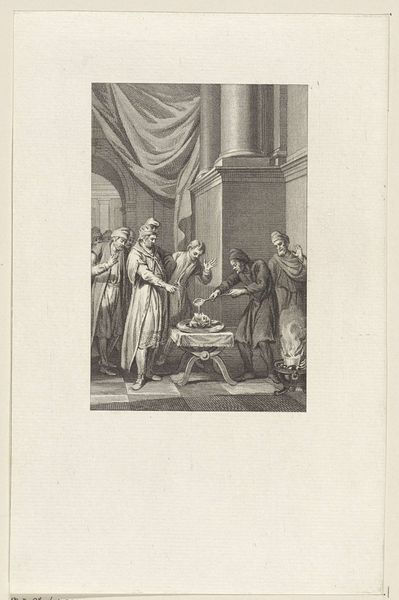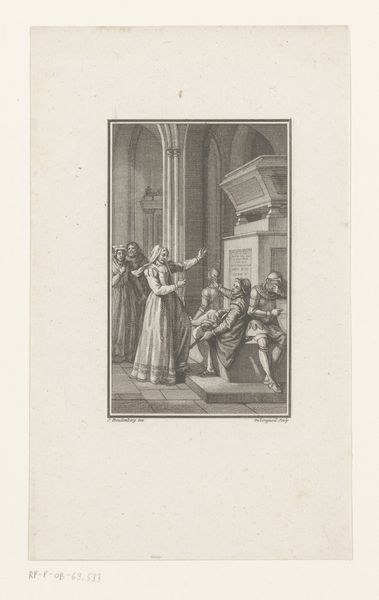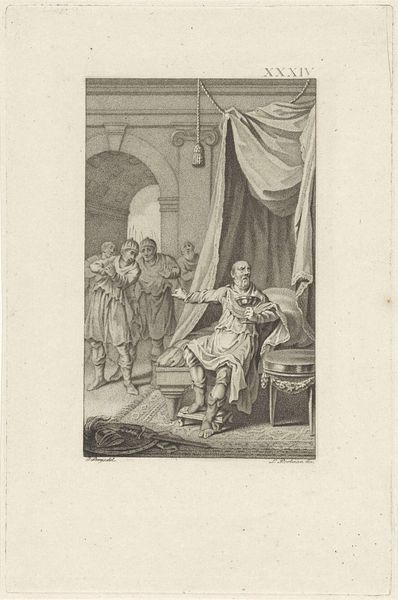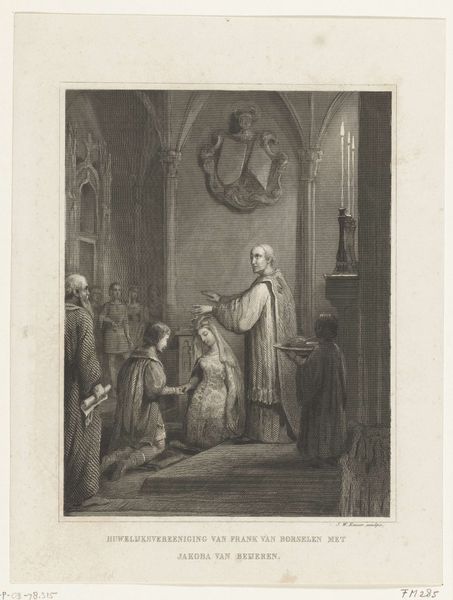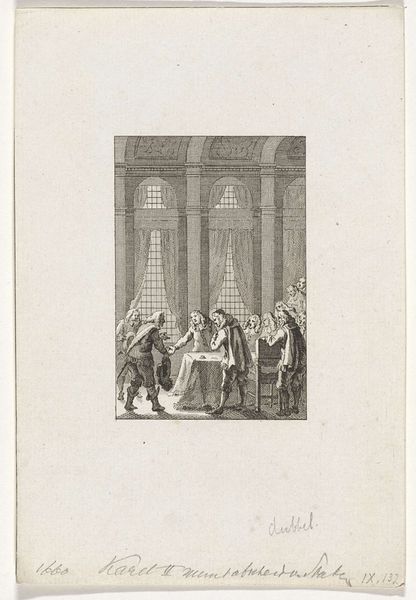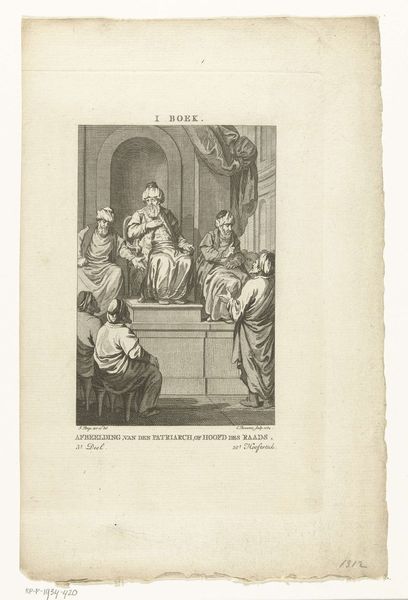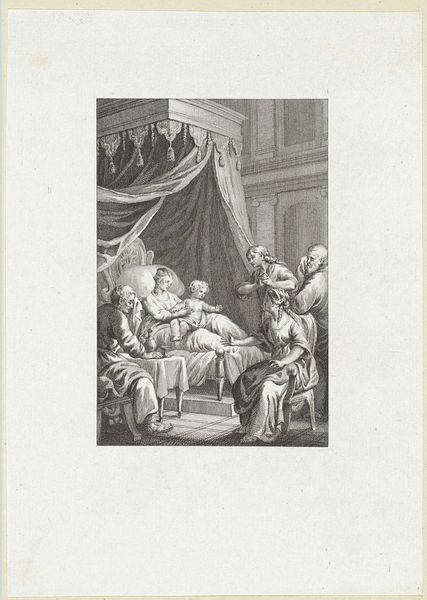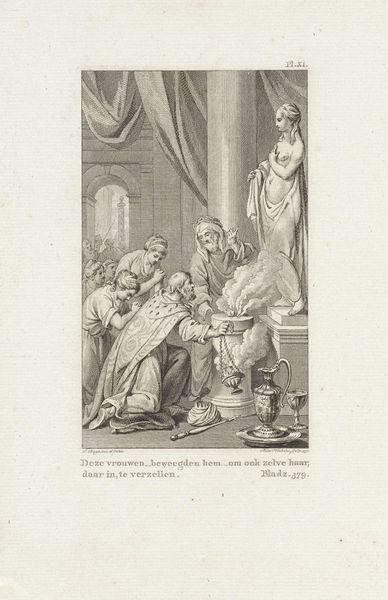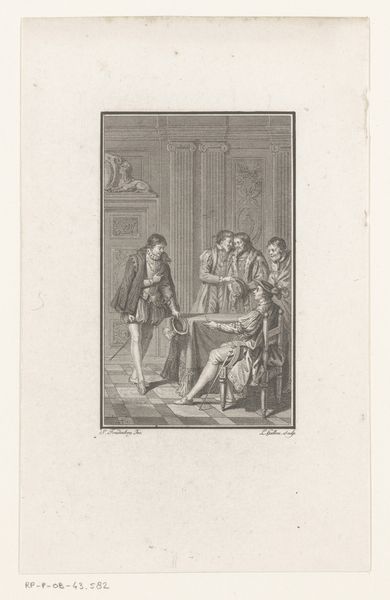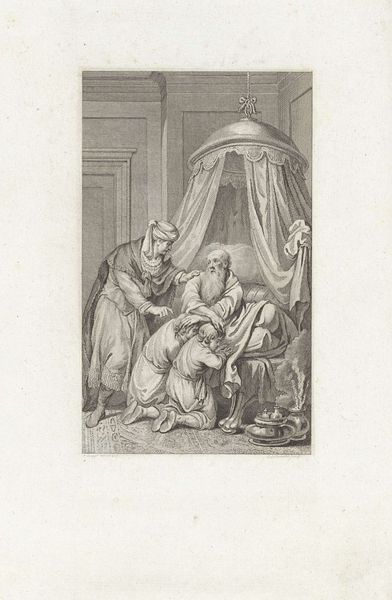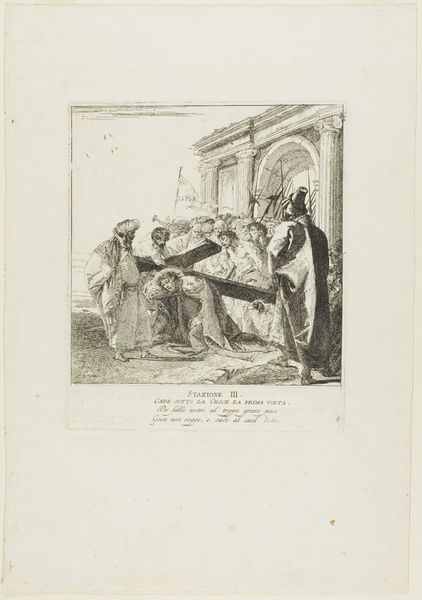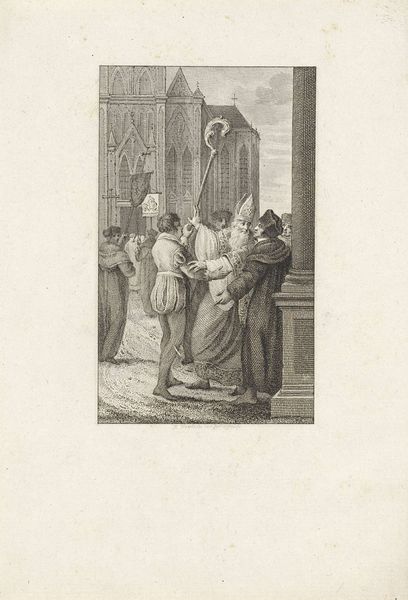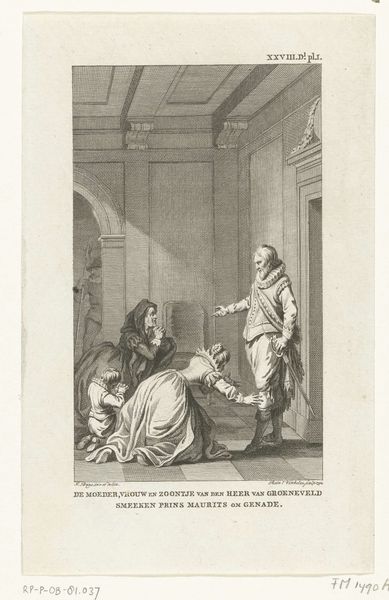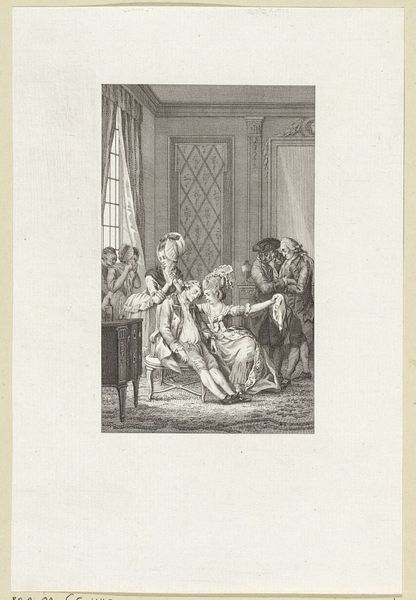
Gereformeerden verwijderen beenderen uit een klooster te Wenen 1784
0:00
0:00
print, etching, engraving
#
neoclacissism
# print
#
etching
#
old engraving style
#
genre-painting
#
history-painting
#
engraving
Dimensions: height 230 mm, width 150 mm
Copyright: Rijks Museum: Open Domain
Editor: So, here we have "Gereformeerden verwijderen beenderen uit een klooster te Wenen," from 1784, by Reinier Vinkeles. It's an etching and engraving, so a print. There’s a definite unsettling feeling about this scene… bodies being unearthed. What's your take on it? Curator: My eye immediately goes to the labor on display. Consider the tools used – shovels, ladders. Etching and engraving, even in 1784, involved specific tools, techniques, and a degree of labor. The act of removing bones from a monastery, rendered meticulously, makes me think about the socio-political context of its production and consumption. Editor: So you are thinking about it in terms of the physical act of creation, both the making of the art and what the art depicts? Curator: Precisely. The means of production. This wasn't just an image created in a vacuum; it reflects a period of conflict and potential iconoclasm. Were these Reformed individuals acting as laborers or iconoclasts? How does the material of the print, disseminated to a public audience, play into this conflict? Editor: Interesting. I hadn’t considered the print as a form of distributing a political viewpoint. It seems almost… journalistic in its own way. Curator: Exactly! Prints like these could be readily circulated, influencing public opinion. The consumption of this image, its mass production using relatively accessible means, brings the lofty subject of religious conflict down to the level of everyday material engagement. What social class would this primarily have been shown to? And how might its meaning shift based on that consumption? Editor: Wow. I am really viewing it differently. Thanks to the emphasis on the 'making' of the image, I hadn’t considered it a product reflecting wider tensions. Curator: It’s about tracing those connections! Remembering that art is created, disseminated, and consumed within very specific material and social contexts.
Comments
No comments
Be the first to comment and join the conversation on the ultimate creative platform.
